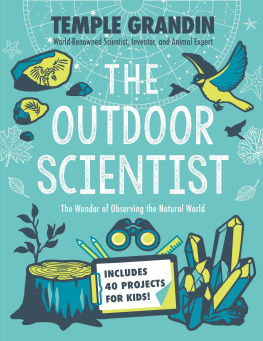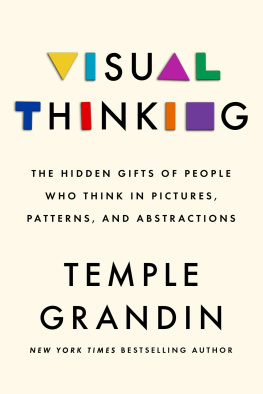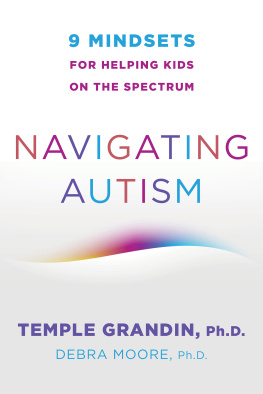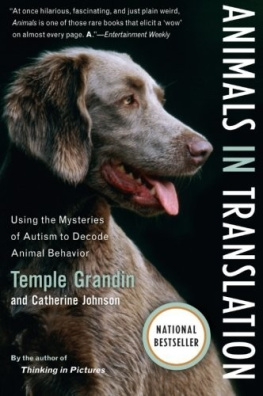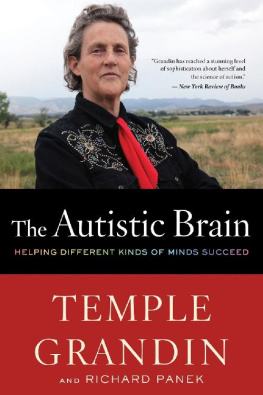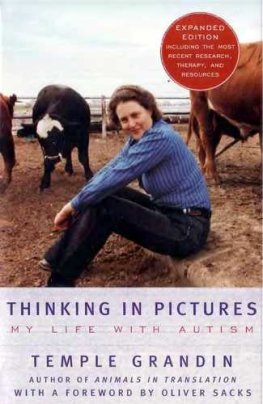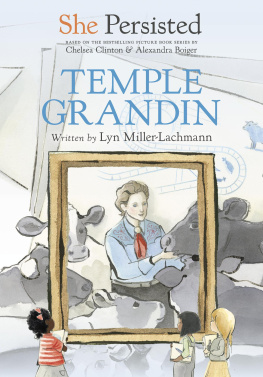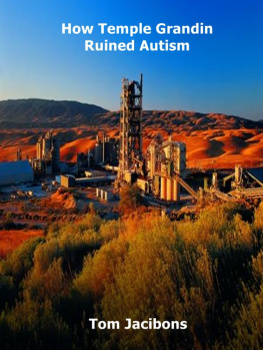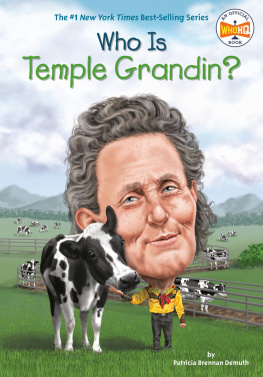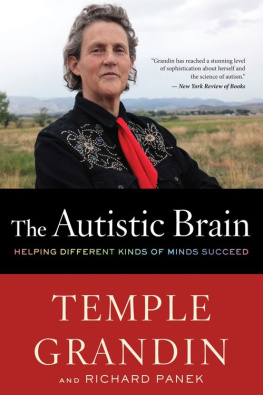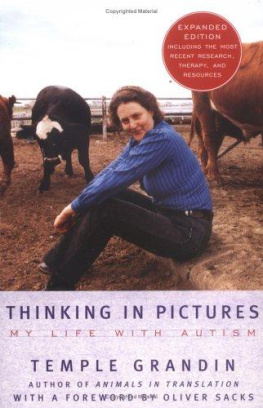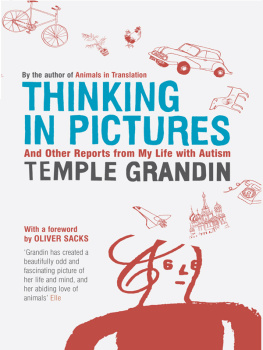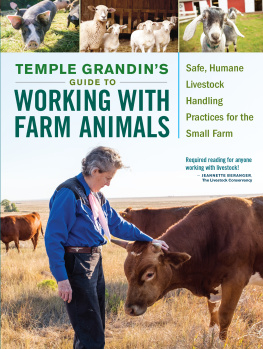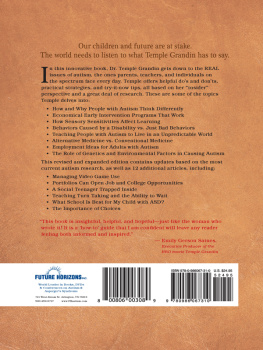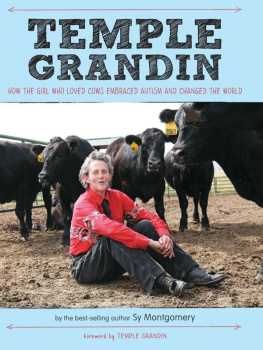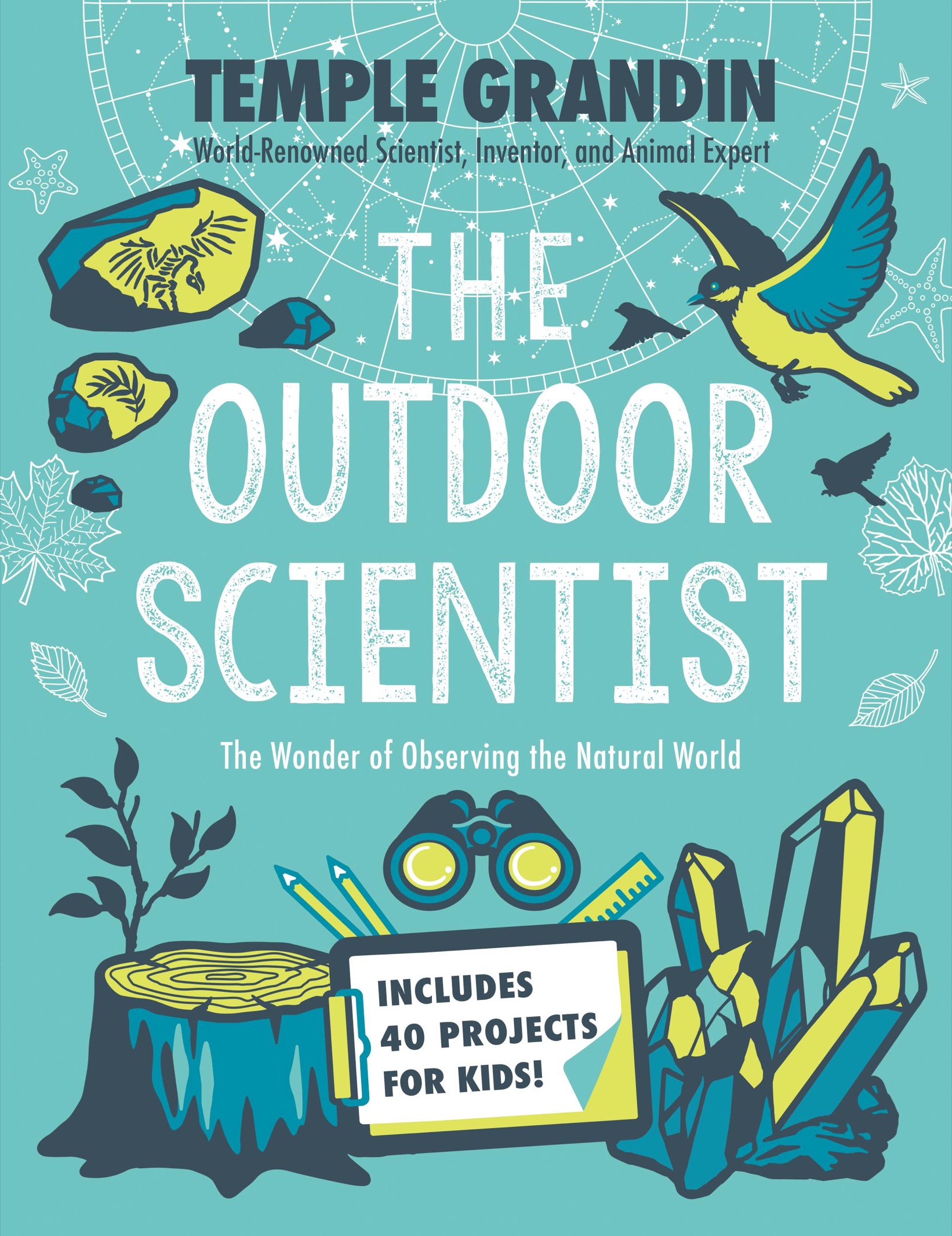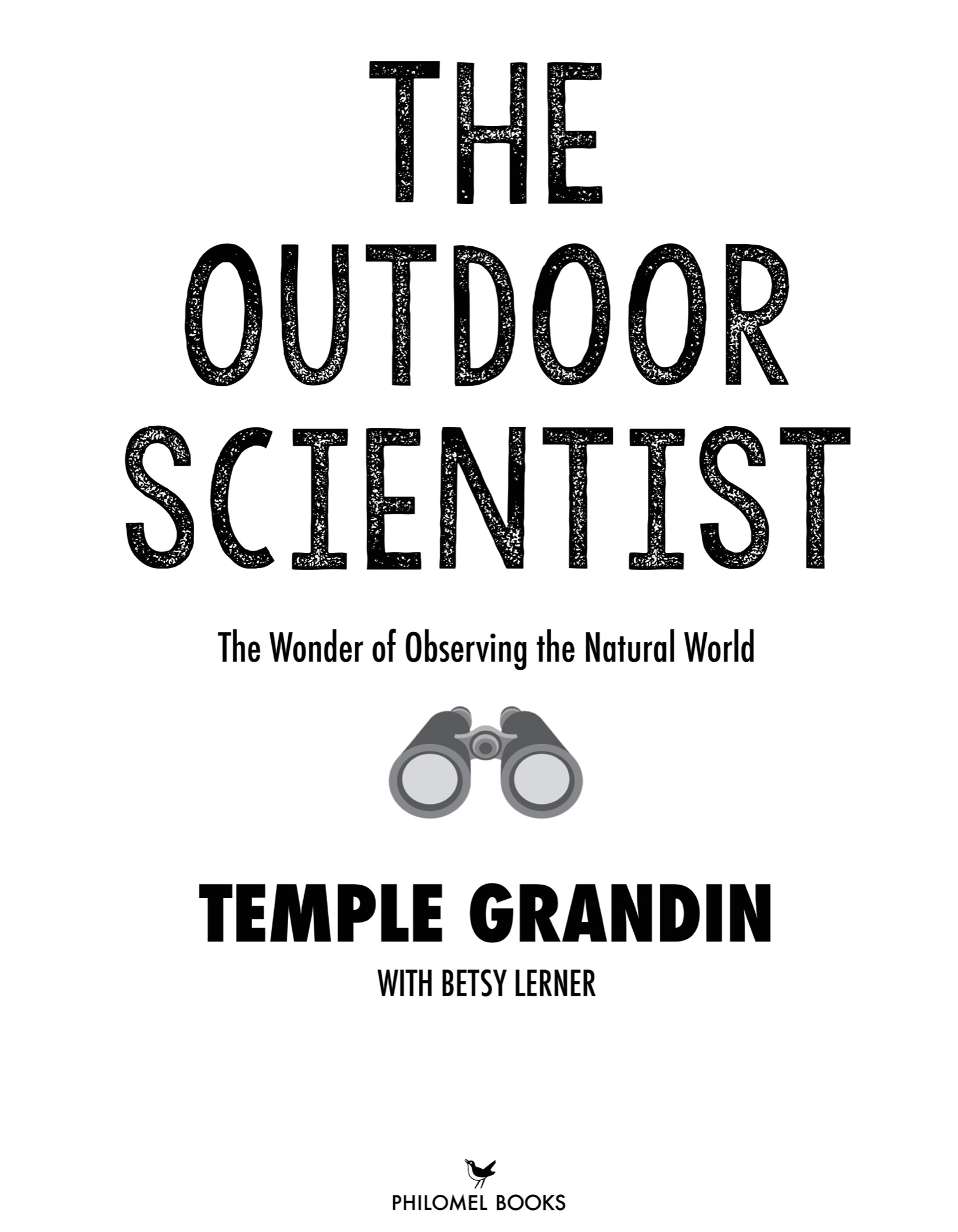ALSO BY TEMPLE GRANDIN
Emergence: Labeled Autistic (with Margaret Scariano)
Developing Talents (with Kate Duffy)
Livestock Handling and Transport
Thinking in Pictures
Genetics and the Behavior of Domestic Animals
The Way I See It: A Personal Look at Autism
Animals in Translation (with Catherine Johnson)
Animals Make Us Human (with Catherine Johnson)
Humane Livestock Handling
Different... Not Less
Unwritten Rules of Social Relationships
The Autistic Brain (with Richard Panek)
Improving Animal Welfare: A Practical Approach
Temple Grandins Guide to Working with Farm Animals
Calling All Minds (with Betsy Lerner)
The Loving Push (with Debra Moore)
PHILOMEL BOOKS
An imprint of Penguin Random House LLC, New York
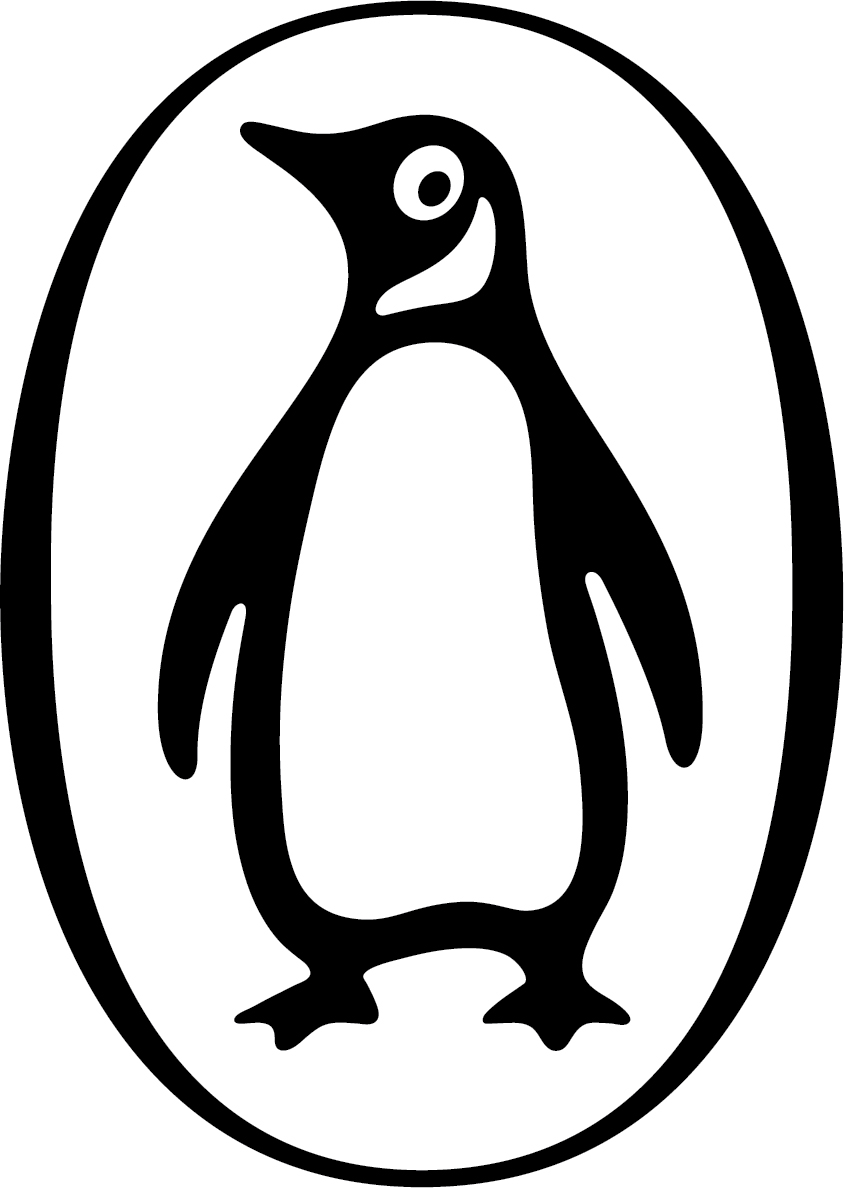
First published in the United States of America by Philomel, an imprint of Penguin Random House LLC, 2021
Text copyright 2021 by Temple Grandin
Illustrations copyright 2021 by Kenton Hoppas
Penguin supports copyright. Copyright fuels creativity, encourages diverse voices, promotes free speech, and creates a vibrant culture. Thank you for buying an authorized edition of this book and for complying with copyright laws by not reproducing, scanning, or distributing any part of it in any form without permission. You are supporting writers and allowing Penguin to continue to publish books for every reader.
Philomel Books is a registered trademark of Penguin Random House LLC.
Visit us online at penguinrandomhouse.com
LIBRARY OF CONGRESS CATALOGING-IN-PUBLICATION DATA
Names: Grandin, Temple, author. | Lerner, Betsy, author.
Title: The outdoor scientist : the wonder of observing the natural world / Temple Grandin with Betsy Lerner.
Description: New York : Philomel Books, 2021. | Includes bibliographical references and index. | Audience: Ages 812 | Audience: Grades 46 |
Summary: A guide to exploring the outdoors and asking questions about natureProvided by publisher.
Identifiers: LCCN 2020047611 | ISBN 9780593115558 (hardcover) | ISBN 9780593115572 (ebook)
Subjects: LCSH: NatureJuvenile literature. | Natural historyJuvenile literature. | NatureMiscellaneaJuvenile literature.
Classification: LCC QH48 .G79 2021 | DDC 508dc23
LC record available at https://lccn.loc.gov/2020047611
Edited by Jill Santopolo and Talia Benamy
Cover design by Tony Sahara
The publisher does not have any control over and does not assume any responsibility for author or third-party websites or their content.
pid_prh_5.6.1_c0_r0
To all the children inspired by nature
CONTENTS
INTRODUCTION
As a child, my world was divided into two places: inside and outside. It was the 1950s, and if we had any say, my siblings and I preferred to play outside. We just loved being outdoors, whether it was the neighborhood with its playgrounds or our backyard or the woods beyond. Anything we found outside was fair game for our entertainment: we made daisy chains, pressed flowers, built tree houses out of scrap lumber. We also flew kites and raced our bikes. I could spend an entire day on my bike pretending it was a horse or a car or a rocket. I can still remember summer nights when the sun set late, and my mother would call to us from the screen door to get inside. Her voice would get increasingly irritated, as it was almost impossible to drag us away from our games of kick the can, four square, hopscotch, and double Dutch jump rope (which I was terrible at). Another reason I didnt like going inside: I dreaded bath time. My mother would be shocked at the layers of grime and filth from a day of playing outdoors. To me, they were a badge of honor.
The outdoors is where I first started making discoveries, though I never would have called them that. I never would have thought that splitting rocks, or collecting shells, or dissecting flower buds was something scientists did to unravel Earths mysteries. To my mind, I was just playing. Its only looking back now that I see how curiosity led to observation, and how observation is at the heart of all science. If you like looking at trees, and bark, and the pattern of veins in leaves; if you are fascinated by clouds or the spots on a ladybugs back; if you like to split open rocks and see whats inside, then youre already an outdoor scientist.
I had no idea what I wanted to be when I grew up, a question that grown-ups are fairly obsessed with. I also had no idea that all the stuff I loved doing as a kid would come to inform my lifes work. Im an animal scientist, a professor, and an engineer, which means that I study animals and teach college students, but I also work with cows, designing livestock equipment. This book traces how my childhood interests contributed to my work today. I also include lots of stories of scientists who, as you will see, saw their childhood interest develop into passion that they pursued for their entire lives. A young Mary Anning would discover the first complete skeleton of an Ichthyosaurus, an ancient sea creature, on the cliffs of England and become one of the leading paleontologists of her day. Jacques Cousteau always wanted to fly, but a childhood accident ended that dream. Instead he became one of the great underwater explorers, who would later describe swimming underwater like flying. Youve probably heard that the number of rings in a tree tells its age. Thats something we know thanks to Andrew Ellicott Douglass, whose early interest in astronomy and observations about climate change led him to develop a new branch of science called dendrochronology. Irene Pepperberg got a parakeet as a gift when she was a young child and would spend her life studying whether birds could just mimic us or truly understand speech. Katherine Johnson was a math genius who would overcome racial injustice and discrimination at NASA to become one of a small group of Black women who came up with the calculations to get Apollo 11 not only to the moon, but back.
But it was during the summers at my aunts ranch, where we spent most of the days outdoors, that my love of the natural world and interest in animal science came together. Wed spend whole days outside with the horses going on long trail rides. It was really hot and my aunt used to say that we were opening a door to an oven in the morning when we set out. The grass was brown, and shed say everything will green up when the big downpours came. I loved watching the thunderheads build up in anticipation of the rain. It was like a huge drama in the sky that I could stare at for hours. I later learned in earth science class that thunderheads (also known as cumulonimbus clouds) form when a body of hot air meets a body of cold air. When the two meet, the hot air rises, creating thunderheads. They can reach heights of 50,000 feet above the surface of the earth. The heat released by water condensation causes powerful rain, lightning, and winds. I loved learning about stuff like that.

